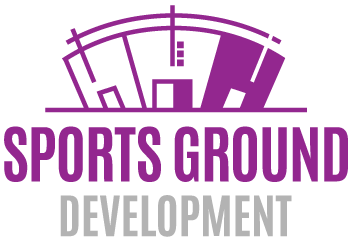The debate between artificial turf and natural grass on sports grounds has been a topic of discussion for years. Both have their unique advantages and drawbacks, impacting not only the way sports are played but also the environment and athletes’ health. This article explores the various aspects of this debate, offering insights into why each option may be favoured in different scenarios.
The Case for Natural Grass
Benefits for Players and Environment
Natural grass has been the traditional choice for sports grounds for centuries. It’s known for its natural feel and ability to provide a safer playing surface. Natural grass, softer than artificial turf, can reduce the risk of injuries such as abrasions or joint stress. Additionally, grass pitches can be cooler than artificial surfaces on hot days, as they don’t absorb as much heat.
The environmental benefits of natural grass are significant. Grass can help in carbon dioxide absorption, thus reducing greenhouse gases. It also aids in water filtration and provides a habitat for various organisms.
Challenges and Costs
However, natural grass isn’t without its challenges. Maintaining a grass pitch can be costly and labour-intensive. It requires regular mowing, watering, fertilising, and reseeding. Grass fields can become muddy and unusable in rainy conditions, and they need time to recover after heavy use.
The Rise of Artificial Turf
Technological Advancements
Artificial turf has gained popularity, especially in areas where natural grass struggles to grow or where water conservation is essential. Modern artificial turfs are far more advanced than their predecessors, resembling natural grass in look and feel. They’re made from synthetic fibres that can withstand heavy use and various weather conditions.
Benefits for Sports Facilities
The primary advantage of artificial turf is its low maintenance compared to natural grass. It doesn’t require watering, mowing, or pesticide treatments, making it more cost-effective in the long run. Artificial surfaces offer consistent playing conditions, unaffected by weather, which is particularly beneficial in regions with extreme climates.
Health and Environmental Concerns
Despite its advantages, artificial turf has faced criticism. Concerns have been raised about the heat it can generate, potentially increasing the risk of heat-related illnesses for players. There are also environmental concerns, as artificial turf is made from plastic and rubber, which are not biodegradable.
Economic Considerations
Cost Analysis
The choice between artificial turf and natural grass often comes down to cost. While the initial installation cost of artificial turf can be high, its maintenance costs are considerably lower than those of natural grass. Conversely, while natural grass has a lower upfront cost, its ongoing maintenance can be expensive.
Long-Term Sustainability
Long-term sustainability is another economic factor to consider. Artificial turf may need to be replaced every eight to ten years, adding to its long-term costs. On the other hand, well-maintained natural grass can last indefinitely, though it requires continuous care and resources.
Health and Safety Impacts
Injury Risks
There is ongoing debate about the impact of these surfaces on athletes’ health. Some studies suggest that playing on artificial turf increases the risk of certain injuries, such as ligament damage. However, other research indicates that the risk of injury is comparable on both types of surfaces.
Impact on Performance
The playing surface can also affect athletes’ performance. Natural grass is often preferred for sports like football (soccer) as it offers a softer, more responsive surface, allowing for better control of the ball. In contrast, artificial turf can lead to a faster game, as the ball travels more quickly and predictably on this surface.
Environmental Impact
Sustainability Issues
The environmental impact is a crucial aspect of this debate. Natural grass can positively contribute to the ecosystem, but it also requires a significant amount of water, fertilisers, and pesticides, which can be harmful to the environment. In contrast, artificial turf doesn’t need water or chemicals for maintenance, but its production and disposal raise environmental concerns. The synthetic materials used in artificial turf are not easily recyclable, contributing to landfill waste.
Heat and Water Conservation
Artificial turf can exacerbate heat in its surroundings, contributing to urban heat islands. On the other hand, natural grass has a cooling effect. However, in regions with water scarcity, maintaining natural grass can be unsustainable, making artificial turf a more practical choice.
Community and Aesthetic Considerations
Public Perception
The choice between artificial and natural surfaces also involves community preferences and perceptions. Natural grass fields are often seen as more aesthetically pleasing and traditional, which can be important for community sports facilities and parks.
Accessibility and Usage
Artificial turf can be more durable and require less rest time between games, making it a practical choice for community grounds that see heavy use. This increased accessibility can be a significant factor in urban areas where space and resources are limited.
Conclusion
The debate over artificial turf versus natural grass in sports grounds is complex, with no one-size-fits-all solution. Each option has its merits and drawbacks, influenced by environmental, economic, health, and community factors. The decision should be based on a balanced consideration of these aspects, tailored to the specific needs and conditions of each sports facility.
Ultimately, the future might see further advancements in both natural and artificial surfaces, potentially offering more sustainable and player-friendly options. As technology evolves, so too will the solutions to this ongoing debate, hopefully leading to more environmentally friendly and safe playing surfaces for all.

